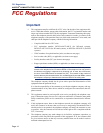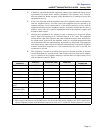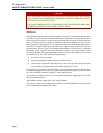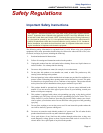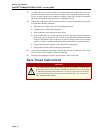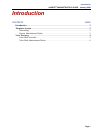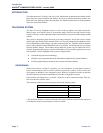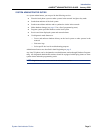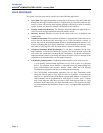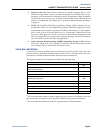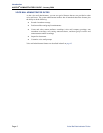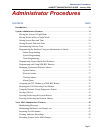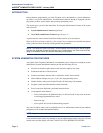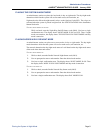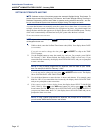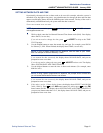
Page 4
Introduction
AXXESS
®
ADMINISTRATOR’S GUIDE – January 2004
Voice Processor
VOICE PROCESSOR
The system Voice Processor can be used for any of the following applications:
• Voice Mail: This application handles all calls that are directed to voice mail (other than
through the Message Notification/Retrieval application) by subscribers and non-sub-
scribers. Callers will hear the main company greeting, followed by a menu of available
options. Stations can forward or transfer calls directly to their mailbox.
• Message Notification/Retrieval: The Message Notification/Retrieval application pro-
vides voice mail message notification and quick mailbox access.
• Directory Services: Directory services provide callers with a list of mailboxes and
extension IDs.
• Automated Attendant: The automated attendant is a programmable feature that can be
used to provide automated call answering service. Calls can transfer, forward, or
directly ring in to an automated attendant. When an automated attendant answers a call,
it plays a recording that gives dialing instructions. After hearing the recording (or at any
time while it is playing), the caller may then dial an extension or mailbox number.
• Automated Attendant Recall Destination: If a call, that is transferred by the auto-
mated attendant, is not answered before the Transfer Voice Processor timer expires, the
call recalls the Automated Attendant Recall Destination. The Recall Destination
announces that the station is unavailable and allows the caller to leave a message (if the
station has an associated mailbox) or dial another extension.
• Call Routing Announcement: Call Routing Announcements can be used two ways:
— A Call Routing Announcement application can be used in place of a playback
device. The playback device function is especially useful for programming hunt
group announcement and overflow stations. When called, the Call Routing
Announcement application will play a recording and then hang up.
— The Call Routing Announcement application can use Digit Translation which
allows the caller to press a single digit for access to a mailbox, a fax-on-demand
function, or a station or hunt group that has an associated mailbox or extension ID.
Digit translation can be programmed for each digit 0-9, #, and *, plus a Timeout
that is used when the caller does not enter a digit. Each digit can lead to a “digit
translation node” that has its own digit translation values. This layered Call Rout-
ing Announcement digit translation creates a “tree” of programmable digit transla-
tion nodes.



